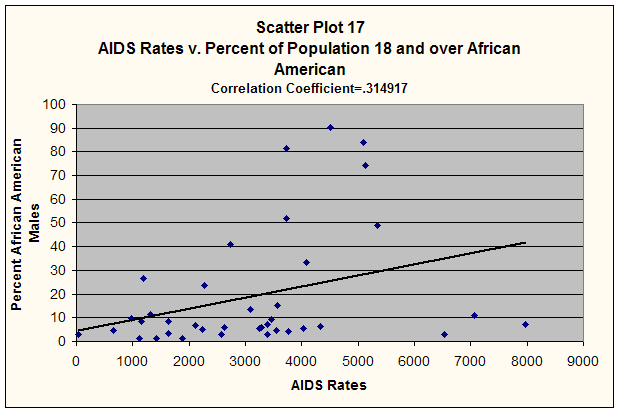
A demographic factor thought to yield significant correlations was race but examining the conclusions drawn from statistical analysis, there were no major correlations significantly higher than .31. Data was analyzed from various populations such as Caucasian, African American, and Hispanic. The highest correlation between the AIDS rates and the percent of the population African American was .32 (this number was rounded), with the removal of certain zip codes that distorted the data (Refer to scatter plot 16).

A few zip codes of Chelsea such as 10001 and 10011 were removed to bring about a higher correlation coefficient. Although the minimum point was met, the correlations made were extremely low in comparison to the other correlations based on poverty, language and education. Other correlations made with the AIDS rates based on race were the percent of the population 18 and over African American and the percent of the African American population; male, female, and combined between ages 25 and 44. The percent of the population 18 and over African American correlation to the AIDS rates was slightly low; delivering a coefficient of .31 (Refer to scatter plot 17).

The correlations made of the percent of the African American population, male, female, and combined between ages 25 and 44 were extremely insignificant subsequent to removing the zip codes that skewed the data[1] (Refer to scatter plots 18&19).


The results of these correlations appear to conclude that the problem is relatively low in the African American community but because there are populations within certain communities, which skew the data such as Chelsea, (Refer to Figure 2) it camouflages the problem. No other significant correlations were found with other races.
[1] The same zip codes of 10001 and 10011 that were removed from scatter plot 16 were removed from scatter plots 18 and 19.